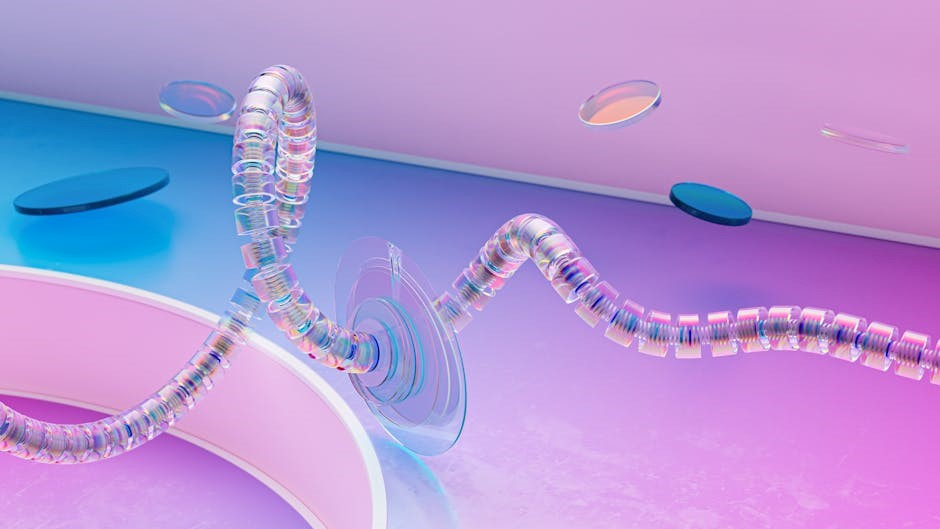Nevro Spinal Cord Stimulator Instructions: A Comprehensive Guide
Welcome to a comprehensive guide on Nevro Spinal Cord Stimulators (SCS); This resource provides essential instructions and information to help patients and caregivers understand the Nevro SCS system, its operation, and key considerations for safe and effective use in managing chronic pain.
Nevro Spinal Cord Stimulation (SCS) represents an innovative and increasingly popular therapy for managing chronic pain. It offers a non-pharmacological alternative for individuals seeking relief from persistent pain that has not responded adequately to conventional treatments. The Nevro system, including the Senza SCS system, delivers electrical pulses to the spinal cord, modulating pain signals before they reach the brain.
This therapy is designed to alleviate chronic intractable pain of the trunk and/or limbs. The Nevro SCS platform, known as HFX, is a comprehensive solution that includes support services tailored to individual patient needs. The Senza system, a key component, is known for its unique HF10 therapy.
HF10 therapy is a breakthrough, FDA-approved treatment for chronic back and leg pain, delivering electrical pulses to the spinal cord to alleviate pain. The system’s design allows for individualized program settings, ensuring that each patient receives the most effective pain relief based on their specific condition and needs. It’s important to remember that individual experiences with the Nevro SCS system can vary, and consulting with a physician is crucial for optimal outcomes.
Understanding the Nevro Senza System
The Nevro Senza system is a spinal cord stimulation (SCS) system designed to deliver electrical stimulation for pain relief. It stands out because it utilizes Nevro’s proprietary HF10 therapy, an SCS approach that provides unique electrical pulses to the spinal cord. This therapy aims to alleviate pain by modulating pain signals before they reach the brain. The Senza system offers a comprehensive solution for chronic pain management.
The system includes a pulse generator, which can be either rechargeable or non-rechargeable, and leads that are implanted near the spinal cord. The electrical pulses delivered by the system are customizable, allowing healthcare providers to tailor the therapy to meet each patient’s specific needs. The Senza system is designed to provide long-term pain relief, with rechargeable systems potentially lasting for 10 to 25 years or longer.
The Senza system’s effectiveness has been demonstrated in clinical studies, and it is an FDA-approved treatment for chronic back and leg pain. The system offers versatility and options, ensuring that patients receive the best chronic pain solution tailored to their unique circumstances. The system, including support services, is designed to improve the quality of life for individuals suffering from chronic pain.
Indications for Nevro SCS Therapy
Nevro Spinal Cord Stimulation (SCS) therapy, particularly using the Senza system with HF10 therapy, is indicated for individuals suffering from chronic, intractable pain. This includes chronic pain of the trunk and/or limbs that has persisted despite other treatment approaches. Specifically, Nevro SCS is often considered for patients with chronic back pain and leg pain.
The therapy is designed for those who have not found adequate relief from conventional medical management, such as medications, physical therapy, or injections. Neuropathic pain, which arises from nerve damage or dysfunction, is another key indication. Conditions like failed back surgery syndrome (FBSS), complex regional pain syndrome (CRPS), and peripheral neuropathy may also warrant consideration for Nevro SCS therapy.
Patient selection is crucial to ensure the best outcomes. Candidates typically undergo a thorough evaluation, including psychological screening, to determine their suitability for the implant. A trial period is often conducted to assess the patient’s response to spinal cord stimulation before a permanent implant is considered. Nevro SCS is intended to improve the quality of life by reducing pain and increasing functionality.
Initial Setup and Programming of the Nevro System
The initial setup and programming of the Nevro Spinal Cord Stimulation (SCS) system are critical steps performed by trained medical professionals following the implantation procedure. The process begins with verifying the proper placement and functionality of the implanted components, including the lead and the pulse generator (IPG).
Using a specialized programmer, the clinician establishes communication with the IPG to configure stimulation parameters. These parameters include amplitude, frequency, pulse width, and the specific electrodes activated to deliver therapy. Nevro’s HF10 therapy, unique to the Senza system, often involves setting a high-frequency stimulation, typically around 10 kHz, which differs from traditional SCS settings.
The programming is tailored to the individual patient’s pain patterns and response; Real-time feedback from the patient is essential during this phase to optimize pain relief. Multiple programs may be created to address different pain locations or activities. The initial programming session also includes educating the patient on how to use the remote control to manage their stimulation settings within the prescribed parameters, ensuring they can effectively control their therapy.
Operating the Remote Control (HFX TSM3000)
The HFX TSM3000 remote control is the primary interface for patients to manage their Nevro Spinal Cord Stimulation (SCS) therapy. This handheld device allows users to turn the stimulation on or off, adjust the stimulation intensity, and switch between pre-programmed settings defined by their physician.
The remote features a simple, user-friendly design with clearly labeled buttons. An ON/OFF button activates or deactivates the stimulation. Adjustment buttons, typically marked with “+” and “-” symbols, increase or decrease the stimulation level. A program selection button allows patients to cycle through different pre-set programs tailored to various activities or pain locations.

The remote provides feedback through visual indicators, such as illuminated program numbers, and auditory cues, like beeps, to confirm actions. If the remote beeps three times and the program indicator reverts, the program change was unsuccessful, requiring the user to move closer to the implanted device and repeat the process. The HFX TSM3000 puts control of pain management directly in the patient’s hands, enhancing their ability to tailor therapy to their specific needs.
Adjusting Stimulation Levels and Programs

Fine-tuning stimulation is essential for optimal pain relief with the Nevro SCS system. The HFX TSM3000 remote control empowers patients to make adjustments within parameters set by their physician. Stimulation levels can be increased or decreased incrementally using the “+” and “-” buttons on the remote. It’s crucial to make small adjustments and monitor their effect on pain levels.
The system typically offers multiple programs customized for different activities or pain patterns. Patients can switch between these programs by pressing the program selection button. Each press advances to the next program, indicated by an illuminated number on the remote. If a program change fails, the remote will beep three times.
When adjusting stimulation levels, pay attention to any changes in pain relief or the emergence of unwanted side effects. If discomfort arises, reduce the stimulation immediately. Understanding how each program affects pain is key to tailoring therapy. Always consult with your physician for further guidance.

Troubleshooting Common Issues
Even with proper use, occasional issues may arise with the Nevro SCS system. If the remote control fails to power on, verify the battery is charged or replaced, if non-rechargeable. Should the stimulation unexpectedly stop, check the remote’s battery and ensure it’s within range of the implanted device. Try turning the remote off and on again to reset the connection.
If you experience a sudden increase in pain or notice changes in stimulation effectiveness, contact your physician immediately. This could indicate lead migration or other complications. If the remote beeps three times when attempting to change programs, move closer to the implanted device and try again.
For patients with rechargeable systems, ensure the device is charged according to the recommended schedule. If you experience skin irritation at the implant site, consult your doctor. Remember, this guide is for informational purposes only; always consult with your healthcare provider for personalized advice.
MRI Safety Guidelines for Nevro SCS Implants
Patients with Nevro Spinal Cord Stimulator (SCS) implants undergoing Magnetic Resonance Imaging (MRI) must adhere to strict safety guidelines. It is imperative to inform the physician requesting the MRI about the implanted SCS device. Specific MRI conditions, including magnetic field strength, gradient, and radiofrequency energy, must be carefully considered.
Consult the Nevro MRI Guidelines manual specific to your device for detailed instructions. This manual outlines permissible MRI parameters and any necessary device programming adjustments before and after the scan. Failure to follow these guidelines can result in device malfunction, tissue damage, or patient injury.
Ensure the MRI facility is aware of your implanted device and has access to the Nevro MRI compatibility information. Certain Nevro systems are MRI conditional, meaning they are safe only under specified conditions. Always prioritize your safety and consult with your physician regarding any concerns about MRI compatibility. Product literature varies by geography, so use the literature from the region where the procedure was performed.
Battery Life and Replacement (Rechargeable vs. Non-Rechargeable)
Understanding the battery characteristics of your Nevro Spinal Cord Stimulator (SCS) is vital for long-term therapy management. Nevro SCS systems are available with either rechargeable or non-rechargeable batteries, each offering distinct advantages and considerations.
Non-rechargeable pulse generators typically provide a battery life of 2 to 5 years. Once the battery depletes, a replacement procedure is necessary. Rechargeable systems, conversely, can last significantly longer, potentially spanning 10 to 25 years or more with proper maintenance and adherence to charging schedules.
Rechargeable systems require regular charging, as outlined in the Nevro user manual. Failure to adhere to the charging schedule can reduce battery lifespan and compromise therapy effectiveness. The specific charging duration and frequency will vary based on individual usage and device settings. Consult your physician or the device manual for personalized guidance on optimal charging practices. Regular follow-up appointments are essential to monitor battery health and ensure timely replacement or adjustments.
Post-Implant Care and Precautions

Following your Nevro Spinal Cord Stimulator (SCS) implantation, diligent post-implant care is crucial for optimal healing and therapy effectiveness. Adhering to your physician’s specific instructions is paramount, as individual needs may vary. Typically, initial care involves monitoring the incision site for signs of infection, such as increased redness, swelling, pain, or discharge. Keep the area clean and dry, following recommended hygiene practices.
Avoid activities that may strain the incision site or the implanted device during the initial healing period. Refrain from heavy lifting, strenuous exercise, and excessive bending or twisting. Your physician will provide guidance on gradually resuming normal activities. Be mindful of body scanners and medical procedures, informing healthcare professionals about your implanted SCS device.
Report any unusual sensations, changes in pain levels, or device malfunctions to your physician promptly. Regular follow-up appointments are essential for monitoring your progress, adjusting stimulation settings, and addressing any concerns. Understanding and adhering to these precautions will contribute significantly to a successful outcome with your Nevro SCS therapy. Remember to consult the Nevro patient manual.
Potential Adverse Effects and Complications
While the Nevro Spinal Cord Stimulator (SCS) system is designed to alleviate chronic pain, it’s essential to be aware of potential adverse effects and complications. As with any surgical procedure, infection at the implant site is a risk, indicated by redness, swelling, pain, or discharge. Device-related complications may include lead migration, where the electrode shifts from its intended position, potentially affecting stimulation effectiveness.
Some patients may experience pain at the implant site or altered sensations, such as tingling or numbness. Although rare, spinal cord or nerve damage can occur during implantation. Stimulation at vertebral levels above T8 has not been well studied.
Allergic reactions to the device materials are also possible. It’s crucial to promptly report any unusual or concerning symptoms to your physician. Regular follow-up appointments allow for monitoring and addressing potential issues. Individual experiences with the HFX iQ or Senza Omnia system vary, including pain relief and adverse effects. Open communication with your healthcare team is vital for managing and mitigating potential complications.
Where to Find Up-to-Date Manuals and Product Literature
Accessing the most current manuals and product literature for your Nevro Spinal Cord Stimulator (SCS) system is crucial for optimal use and safety. Nevro Corporation provides comprehensive resources, including user manuals, quick start guides, and MRI safety guidelines. To ensure you have the latest information, visit the official Nevro website. Be sure to select the product literature specific to the region where your procedure was performed.
Manuals are subject to change as the technology evolves, so regularly checking for updates is recommended. The website typically offers downloadable PDF files, which may require Adobe Reader to view. These resources cover various aspects, such as operating the remote control (HFX TSM3000), adjusting stimulation levels, troubleshooting common issues, and understanding battery life; You may also find pairing guides and reset instructions.
For trial patients, specific manuals for devices like TSM3000/TSM3500 are available. Always refer to the product literature for detailed instructions and safety information. If you have difficulty accessing the materials online, contact your physician or Nevro directly for assistance.

Be First to Comment